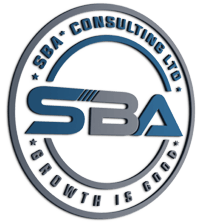A recent article I read on Cash Flow Problems….
Highlighted these eight issues. Which issues do you suffer from?
- Lacking cash reserves.
- Expensive borrowing.
- Decreasing sales or profit margins.
- Outstanding receivables.
- Uncontrolled business growth.
- Too much inventory.
- Seasonal changes in demand.
- Inaccurate forecasting or bookkeeping practices.
All these issues can be fix, the problem is do you want to tackle the problems.
Five of these issues are inter-related. A large portion are tied to inaccurate forecasting, which in turn is tied to your bookkeeping and accounting practices, but also your business plan and marketing research.
Inter-related issues
If you properly forecasted your sales, inventory requirements and expenses your inventory levels should not be high (whether based on seasonal changes or not), uncontrolled growth and unknown decreasing sales or profit margins. Business should be one of two shapes, if you were to plot it on graph paper. The plots should be based either monthly or quarterly. The longer the period the less volatility.
The first a steady positive sloping line. Not too steep as that would be uncontrolled growth, but a nice healthy rise. That healthy rise is dependent on your company, your suppliers, your free cash available for advertising and growth among other factors.
The second shape would be a wave, again with slow but healthy curves. The downward/upward track would be companies that are seasonal.
What you do not want is saw-toothed shape. This would mean strong downward sloping lines followed by steep upward lines. This would play havoc with not only your cash flow, but your warehouse and the rest of your employees.
So, what can you do?
Here are fast answers, but there are downsides to every solution. You need to spend time and model the effect on your business and cash flow before you implement these tactics (so they are for discussion only).
Too much inventory – slash the sales price and move it out
Decreasing sales – run a sale
Lower profit margins – raise the sales price
Outstanding Receivables – offer cash discounts
Outstanding Receivables – take credit cards
Outstanding Receivables – factor your receivables
Limited cash reserves/too much debt – find investors or make a capital call/invest more money in your business or cut expenses
The key
Management needs to take time-out and examine the aspects briefly mentioned in this article. They need to take that information and model what the results may be based on each possible corrective course. As an example, raising prices would increase gross profit, and may decrease sales (and thus not move inventory fast enough). But that may result in more cash, faster. What about the lost sales due to higher prices, again the result may be negligible?
How about the argument that our competitors are selling the same/similar product for $10, and we want to sell it for $15? How can we compete? Look at your value proposition and tweak your marketing/sales message. Why do people spend substantial amounts of money for products that do not seem to better than others, because of a buzz (be that a celebrity endorsement, a popular trend (green or organic) or an excellent ad campaign that energizes the customer base.
But whatever the corrective outcome is, action needs to be taken now, not later. You cannot spend profits, but you need to pay your debts.
